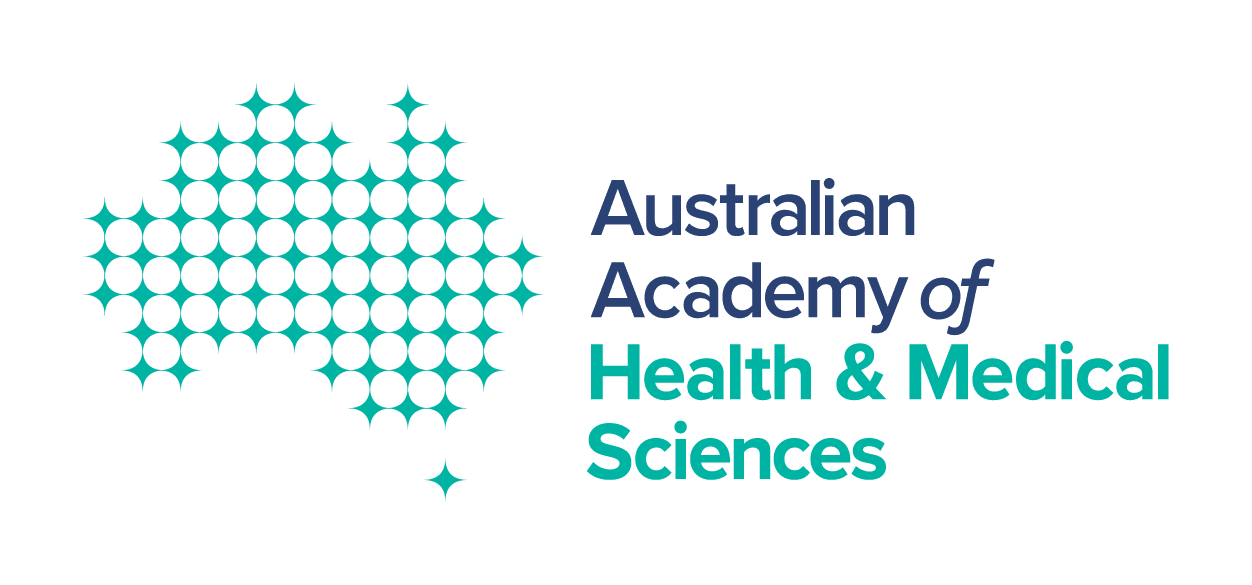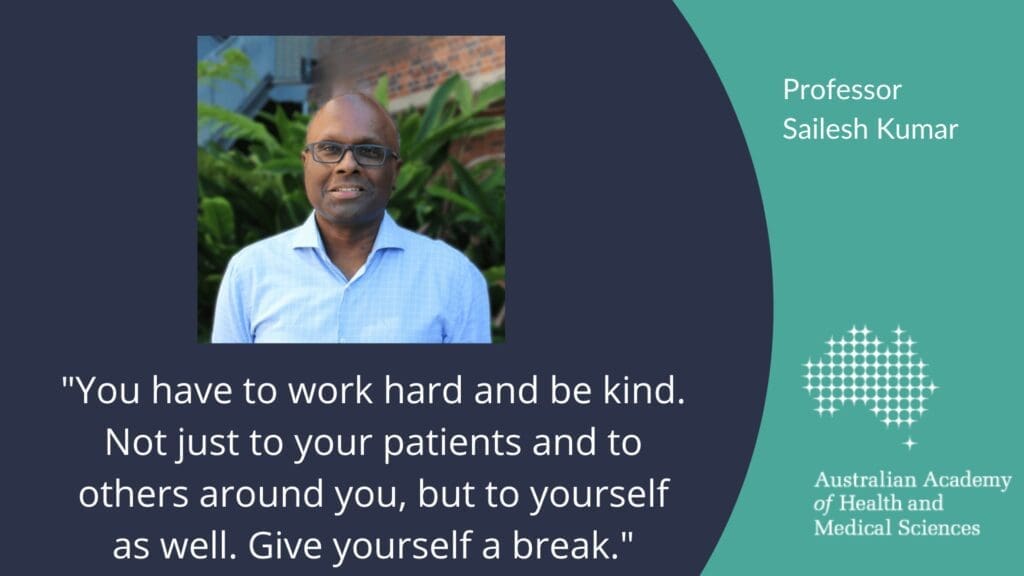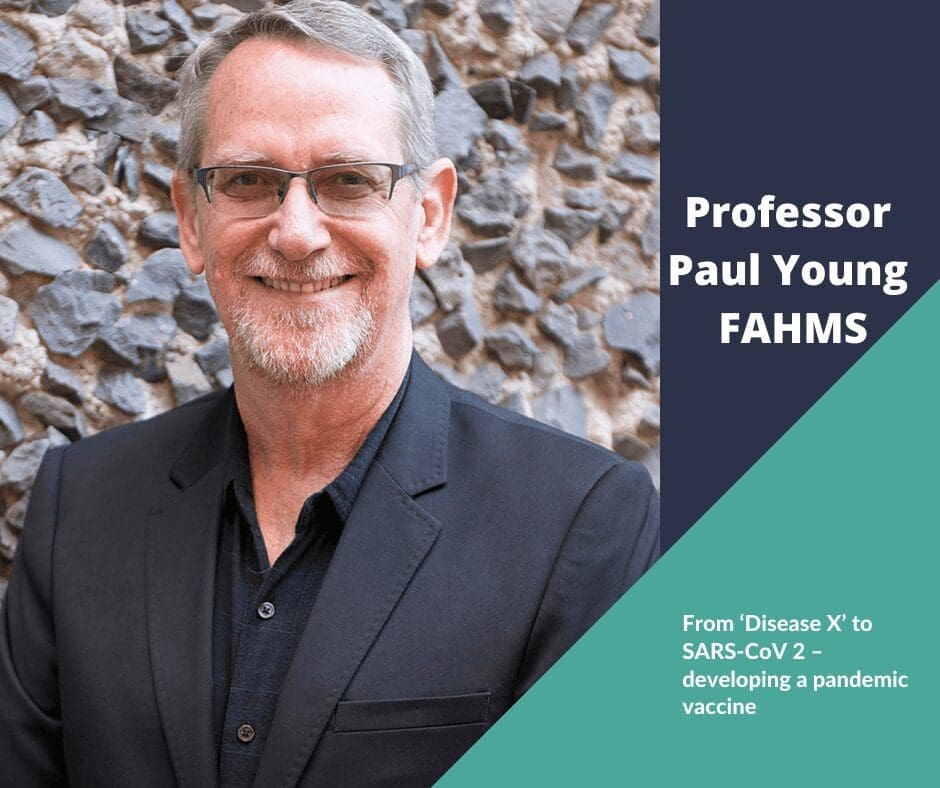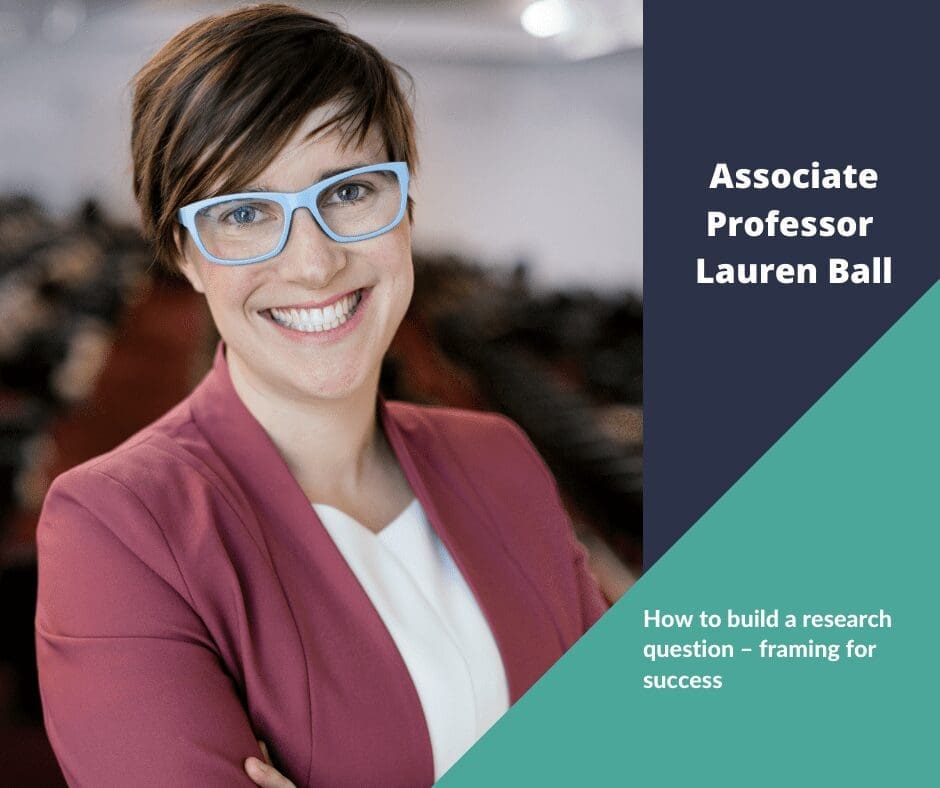Working as a clinician-scientist can mean having three careers in a day—a doctor, a scientist, and a teacher. It’s a fascinating career path, but for many students, it can seem like a black box. How can you build this career, and what are the skills you need to succeed?
Some of Queensland’s most eminent clinician-scientists shared stories of how they got started, what they have achieved, and how they juggle competing demands at the recent 2022 Queensland Clinical Sciences Symposium – Life as a Clinician Scientist.
This year the symposium returned in an online format with the theme of “The Making of a Clinician-Scientist – Stories and Skills”.
You can watch recordings of all presentations in our video library, or read on for some of the event’s highlights.
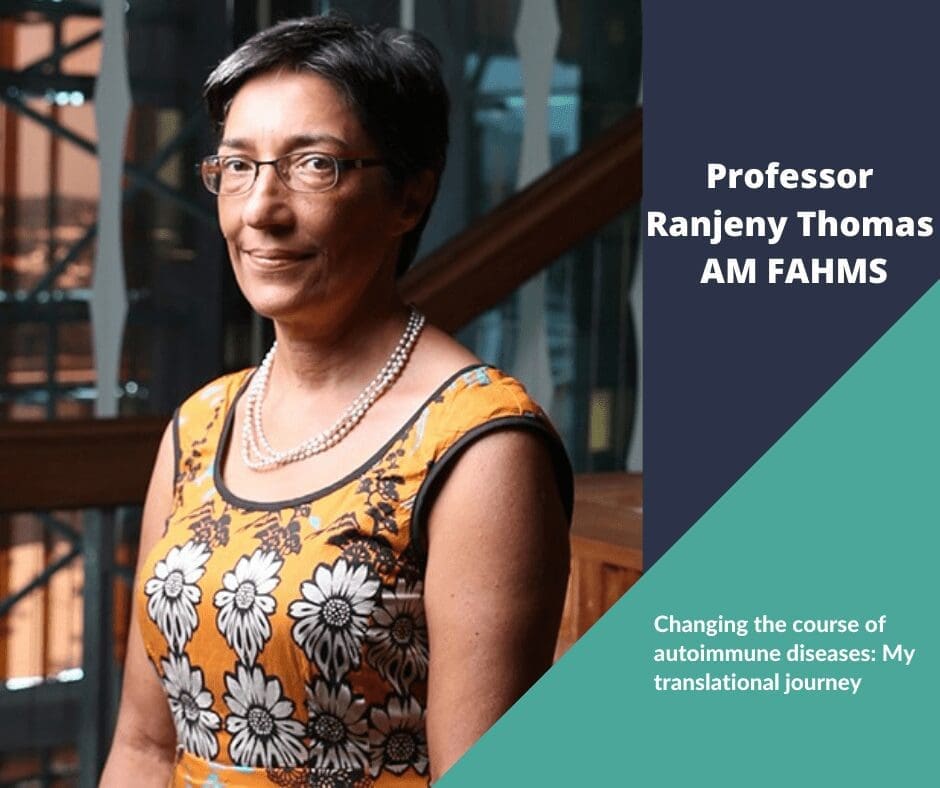
What does the translation of research from bench to the bedside actually involve? The answer–a lot of hard work.
Professor Ranjeny Thomas AM FAHMS knows this too well. As Professor of Rheumatology at the University of Queensland, Translational Research Institute, Professor Thomas is also the founder of Dendright, a biopharmaceutical company founded in partnership with Uniquest, where she focuses on translating research into patient benefits by developing novel drugs for autoimmune diseases.
For Professor Thomas, translational research starts with the research question. “You have to look at your fundamental science and pre-clinical research to really see whether your idea is tractable to be translated,” she said.
From seeded investment to an options license agreement and drug development, it can take years to clear the many hurdles for funding.
Looking back on her first foray into commercialisation, Professor Thomas called it a “huge learning experience”.
“I learned new concepts of time, risk and value, and I got an international translational and industry network out of that. I had the tools, reputation and motivation to do it all again, which is in fact what I did.”
Overall, it’s important to be persistent and involved the right partners. “Commercialisation is a long haul and a difficult road, but it actually is the only way for an idea to get to the clinic and to patients,” she said.
“Discoveries that never leave your lab do not impact the problems that you set out to solve.”
Professor Sailesh Kumar, Head of Academy and Mayne Professor of Obstetrics & Gynaecology at the University of Queensland, admits that his job can be “awfully hard work”. As someone who works in an academic role with significant research output, Professor Kumar also works several days a week in the public system as a senior specialist in maternal and fetal medicine and obstetrics and gynaecology.
“I find my job incredibly fascinating and satisfying,” he said. “I wouldn’t change it.”
That being said, Professor Kumar suggests someone interested in a career in academic medicine would be wise to seek out mentors, show interest in research, and be certain this is the journey you want to take—because it is a career path that requires a lot of work.
“The key thing is not to rush,” he said. “You are really judged on your research output. It’s not good enough to write the odd paper. You really have to show sustained output. You have to make a difference.”
Professor Paul Young FAHMS, Head of School, School of Chemistry and Molecular Biosciences at University of Queensland, knew fairly early into his medical training that he wanted to study infectious disease, particularly neglected diseases in the developing world. “It has become my passion for the past 40 years,” he said.
Much like an actor who is praised as an overnight success after years of hard work, Professor Young spent decades investigating infectious diseases before leading the team that would develop a COVID-19 vaccine.
His advice to medical students is to take heed of pathology training, as it is “one of the most important and underlying components of the practice of a clinician out there.”
Professor Young also said none of his work would be possible without teamwork—and in fact, no clinical research is ever possible without the input of a strong, partnered team.
Professor Pamela McCombe, Professor and Head of the Royal Brisbane Clinical School in the Faculty of Medicine at the UQ Centre for Clinical Research, was interested in research from her student days.
As a clinician-scientist focused on neuroimmunology and genetic disease, she considers genetics the most exciting specialty for young neurologists today. “We are just starting to get clinical trials about actually treating people with different genetic variances,” she explained. “It’s going to be very exciting. We’re going to end up needing clinicians who can treat patients.”
Today, thanks to research, there is a greater capacity to test for genetic disorders. Professor McCombe has learned that for studies to be effective, you need to have large sample sizes and be willing to learn new skills, such as statistics.
“The worst crime is low sample size,” she said. “It’s really important to learn about databases, and I’ve been converted to this in the last decade.”
That’s because databases are extremely specific, and it’s important to understand data to a level where you can speak to statisticians about pages of code when examining results of a study. She recommended medical students to learn Bayesian statistics, which will become increasingly common as computers become bigger and stronger.
Professor David Reutens FAHMS, Director of the Centre for Advanced Imaging, remembers the exact moment he wanted to become a neurologist. He was a third year medical student at the University of Western Australia when he diagnosed a lateral medullary stroke.
“It sort of felt like being Sherlock Holmes, being able to deduce the location of a tiny stroke by matching clinical signs with the anatomy of the tracts in the brain stem,” he said.
Ironically, today, medical imaging has made this skill largely redundant. Even so, once he was set on the path of becoming a neurologist, he was focused on his goal.
At the time, epilepsy was one of the few areas of neurology where you could actually cure patients, which sparked his interest.
He describes translational research as being “like a fountain”, where patients with epilepsy require clinical and diagnostic services, and clinical observations on these patients, as well as the processes and economics of care delivery, influence research and technology, which in turn is trialled and translated into clinical application.
Professor Reutens said he was fortunate to have had many good mentors throughout his career. “This is something important for students – mentors and role models are very important for your future career.”
If you’re just starting out in research, the first question tends to be the biggest–how do you define what you should study?
Associate Professor Lauren Ball, Advanced Accredited Practicing Dietitian and Group Leader of the Healthy Primary Care research group at Griffith University, understands this challenge. She said that for clinicians, can take longer that the research project itself.
That’s because developing a good research question that directs and centres your research involves having good data as well. “Really, it’s about turning a clinical question or an idea into something that can be acted on in a research project,” she explained.
A good research question will define and focus your research, and draw a clear boundary of what you are interested in and keep out everything else. It can be particularly helpful to come back to your research question once you start your project, she said.
“Really any time you feel lost or overwhelmed, come back and ask yourself what is the question you are asking with this research project?”
Associate Professor Ball recommends choosing a topic that genuinely interested in. “If you are going to be investing time and energy into conducting research, it should be something you are interested in, that you can think about when you’re in the shower or falling asleep at night,” she said.
Find out more about our Life as a Clinician-Scientist events on our program page.
